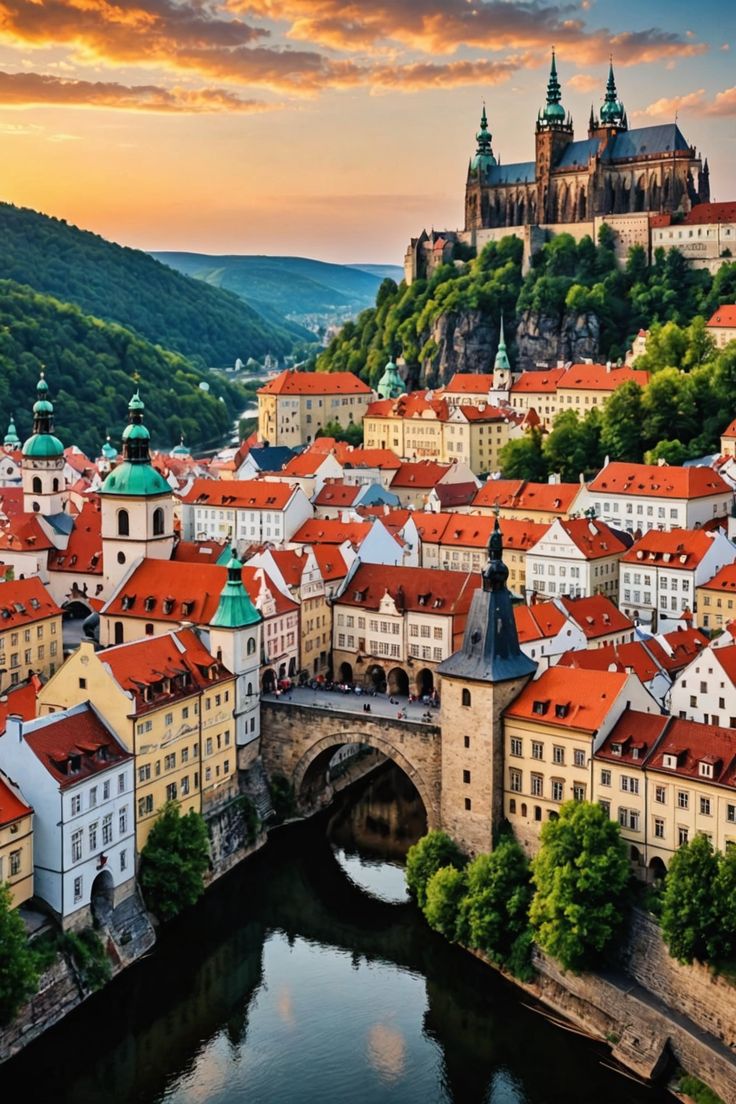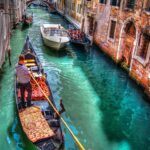Prague, Czech Republic: A Tale of History and Enchantment
History of Prague
Prague, the capital of the Czech Republic, is often called the “City of a Hundred Spires” due to its stunning Gothic and Baroque architecture. Founded in the 9th century, It became a cultural and political hub during the reign of Charles IV in the 14th century. As the Holy Roman Emperor, Charles IV made Prague the imperial capital, commissioning landmarks like Charles Bridge and St. Vitus Cathedral.
Despite enduring wars and political upheaval, including the Velvet Revolution of 1989 that ended communist rule, Prague has preserved its historical charm. Today, it is a UNESCO World Heritage Site celebrated for its rich history and vibrant culture.
Daily Life
Daily life in Prague is a blend of old-world charm and modern convenience. Residents often start their mornings with a stroll through the cobblestone streets, enjoying coffee and traditional Czech pastries like koláč. Public transport, including trams and the metro, makes commuting efficient, while many locals and tourists enjoy walking through neighborhoods like Malá Strana and Old Town.
It’s cultural calendar is packed with events, from classical concerts in historic venues to outdoor markets and festivals. Locals cherish their parks, such as Letná Park, which offers panoramic views of the city.
Impact on Daily Life Globally
It’s influence reaches beyond its borders, particularly in the realms of art, architecture, and literature. The city was home to iconic figures like Franz Kafka and Alphonse Mucha, whose works continue to inspire. Its preservation efforts also set a benchmark for maintaining historical landmarks.
Moreover, It is a hub for diplomacy, education, and tourism, hosting millions of visitors annually who leave with a deeper appreciation for European culture and history.
Fascinating Facts
- Astronomical Clock: It’s Astronomical Clock, installed in 1410, is the third-oldest in the world and still operational.
- Charles Bridge Legends: The bridge’s construction allegedly involved egg yolks to strengthen the mortar.
- Bohemian Crystal: It is famous for its high-quality glass and crystal, a tradition dating back centuries.
- Velvet Revolution: The peaceful protests of 1989 earned their name for their non-violent nature.
- Cultural Melting Pot: The city has been influenced by Gothic, Baroque, Renaissance, and modernist styles.
Significance
It is a cultural and historical treasure trove. It embodies resilience, having withstood wars and political changes while retaining its identity. Its architectural landmarks, such as Prague Castle and the Old Town Square, are symbols of European heritage. Additionally, its vibrant arts scene and innovation make it a beacon of creativity.
Observance and Celebrations
It hosts numerous events and festivals:
- Prague Spring International Music Festival: A celebration of classical music held every May.
- Easter Markets: Vibrant markets showcasing traditional crafts, food, and music.
- Christmas Markets: Famous for their festive atmosphere and unique gifts.
Important Points to Remember
- Architectural Diversity: It’s skyline is a mix of Gothic spires, Baroque domes, and modernist structures.
- Affordable Luxury: Despite its beauty, Prague remains one of Europe’s more affordable capitals for tourists.
- Language: While Czech is the official language, English is widely spoken in tourist areas.
- Conservation: Efforts to preserve Prague’s historical sites ensure its legacy for future generations.
FAQs
1. What is the best time to visit? Spring (April to June) and autumn (September to November) offer mild weather and fewer crowds.
2. Is Prague a walkable city? Yes, many of the main attractions are within walking distance, making it ideal for exploring on foot.
3. What currency is used? The Czech koruna (CZK) is the official currency, though euros are accepted in some tourist areas.
4. What foods should I try? Traditional dishes like svíčková (beef with creamy sauce) and trdelník (a sweet pastry) are must-tries.
Wishing a Bright Future
It’s enduring beauty and cultural significance make it a city worth cherishing. As visitors explore its historic streets and vibrant arts scene, they contribute to its legacy. By promoting sustainable tourism and preserving its heritage, we can ensure Prague remains a jewel of Europe.
Why is Important to Society
It’s story is one of resilience and cultural richness. It serves as a reminder of Europe’s historical depth and the importance of preserving heritage. Its blend of tradition and modernity inspires people worldwide, making it a vital link to the past and a gateway to the future.










